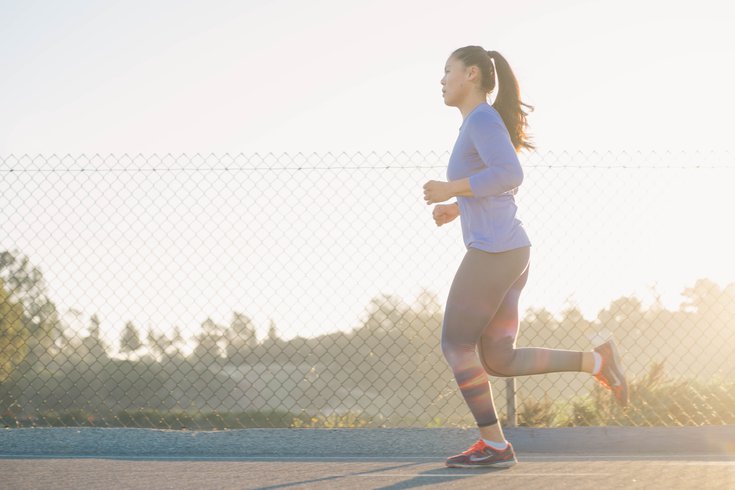
February 14, 2023
 Andrew Tangalao/Unsplash
Andrew Tangalao/Unsplash
People are advised to gradually return to their exercise routines after having COVID-19. Immediately returning to intense workouts may cause injury.
Regular exercise is important for maintaining good health, but returning to a fitness routine after a COVID-19 infection can be challenging.
Doctors advise people to take a slow and easy approach when they return to exercise – even if their symptoms were mild. But they also emphasize that there is no single path back.
"There isn't a clear, uniform response in people that recover from COVID-19," said Dr. James Borchers, a sports medicine doctor at The Ohio State University Wexner Medical Center, told Everyday Health.
Borchers, who helped develop a set of exercise guidelines, said people should stop exercising and consult with a doctor if they experience chest pain, a fever, palpitations or difficulty breathing after resuming their exercise routines.
The most important factors to consider are the type of symptoms that COVID-19 caused, as well as their severity and duration.
People whose infections did not result in symptoms can begin exercising three days after they tested positive for COVID-19, according to guidance published last year by the American College of Cardiology. That is enough time to determine whether symptoms will develop.
People with mild symptoms that don't involve the heart or lungs generally can safely return to exercise after their symptoms resolve, the guidance states. Because the loss of smell or taste may linger for weeks, people don't need to wait for these symptoms to dissipate to lace up their sneakers again.
Taking time to rest while fighting an infection will make the return to exercise easier, Jennifer Scherer, a medical exercise specialist at Fredericksburg Fitness Studio in Virginia, told Healthline last year.
"If you return to exercise too soon, you are not allowing your body the strength to fight the virus," Scherer said. "Put all of your energy into self-care, gentle stretching, plenty of water, and a balanced diet complete with fruits, vegetables, lean proteins, whole grains and dairy."
Anyone who has tested positive for COVID-19, or has a suspected infection, should not exercise around other people until their isolation periods have ended.
The American College of Cardiology recommends that anyone who had heart- or lung-related symptoms during or after a COVID-19 infection talk with a doctor before resuming exercise. These symptoms include chest pain or tightness, difficulty breathing, fluttering or irregular heartbeats, lightheadedness, and fainting. Anyone who was hospitalized also should also be evaluated by a doctor before exercising again.
People with mild cases of COVID-19 who experienced heart- or lung-related symptoms are advised to avoid intense exercise until their symptoms have resolved and they have undergone cardiac testing.
People who experience severe illness and complications need to be more cautious when ramping back up. The American College of Cardiology advises people diagnosed with myocarditis — heart inflammation — to refrain from exercise for three to six months. They also should be cleared by their doctors before exercising again.
People with long COVID, especially those with heart- or lung-related symptoms, may take longer to return to their pre-illness fitness levels.
People who are still struggling to return to their pre-infection exercise levels a month or more after COVID-19 should talk to their doctors about getting a possible cardiac workup, including an electrocardiogram and an echocardiogram, according to a group of Australian scientists who published a return-to-exercise guide in the Journal of Science and Medicine in Sports.
When returning to exercise after a COVID-19 infection, it's important to listen to your body to ensure that you don't push yourself too hard. Here are some other expert recommendations:
• Don't be afraid to ask for help. Athletes can get help developing a return-to-exercise program from athletic trainers and sports physicians. Others can work with a person trainer to gradually return to their pre-COVID-19 fitness levels.
• Ease back in. Start by going for long walks and doing gentle stretching exercises. Then slowly build up to more intense workouts. This is important because the body loses muscle mass the longer a person is sedentary; pushing the body too quickly can cause injury. If you're used to completing a 60-minute fitness class, start with a 30-minute class and advance from there. If the 30-minute class takes a toll, scale back and take it slower.
• The British Medical Journal suggests starting with low-intensity activities, like walking or light yoga, and gradually work your way up to moderate aerobic exercises with rest periods in between them.
• Remember that strengthening exercises are as important as cardio work. Bodyweight exercises, or those that require weights or resistance bands, trigger the production of hormones and cells that strengthen the immune system.
• Don't compare yourself to others. Some people will be able to increase the duration and intensity of their workouts on a weekly basis. Others will need to stay at each step for longer periods of time.
• Be aware of signs of post-exertional malaise. If you feel good at the start of exercise, but experience the return of symptoms or develop new symptoms, like pain or severe fatigue, stop exercising immediately and rest. Talk to a doctor about the best way to manage this condition.